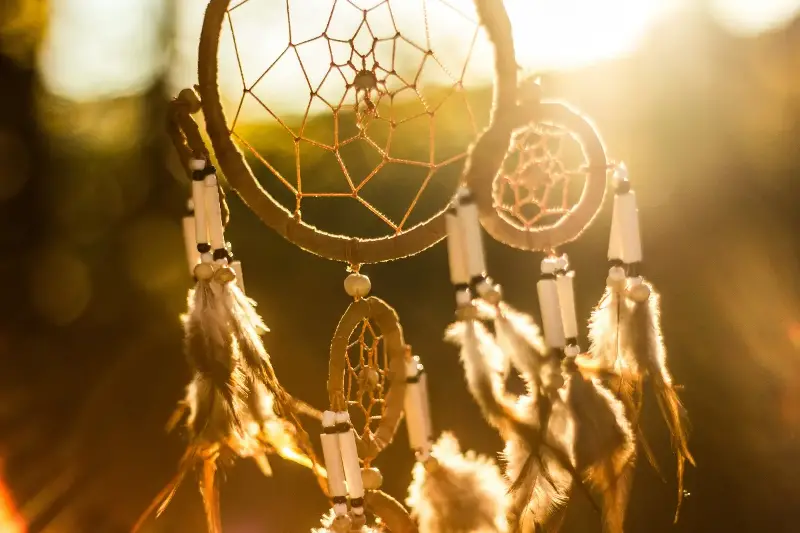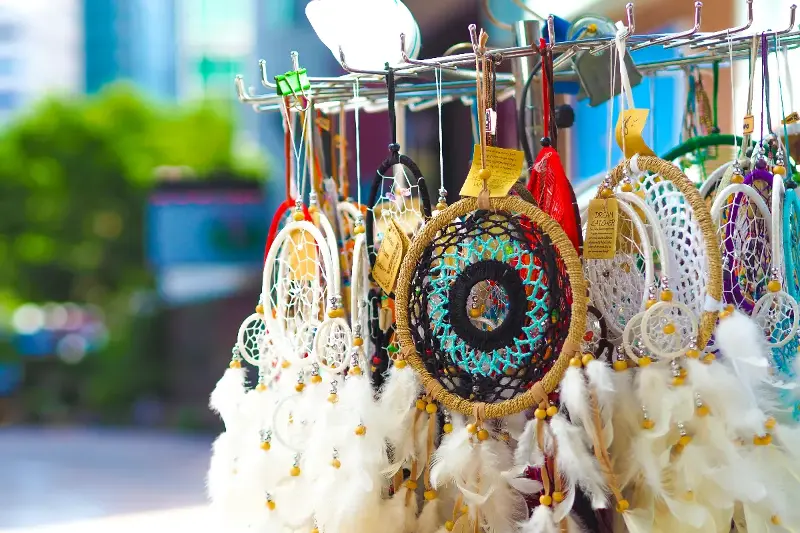If you step into a trendy urban flat or a vibrant classroom today, you might find a dream catcher swaying gently in the breeze. The iconic loops of sinew-threaded willow and their trailing feathers have journeyed far from their Indigenous roots, weaving themselves into daily life far beyond the borders of their original cultures. But have you ever wondered how this ancient object still serves as a protector, a harmoniser, and potentially, a lesson in cultural respect?

The Roots of Dream Catchers: More Than Just Decor
Dream catchers hold deep significance for several North American Indigenous cultures, particularly the Ojibwe people. Traditionally, these hoops were hand-crafted from natural willow and sinew, with a central web resembling a spider’s intricate trap. According to legend, dream catchers were hung above the beds of children to filter dreams: the good dreams would float through the open web and feathers, while the bad dreams would be caught and dissipate with the morning light.
Each element of the dream catcher holds meaning:
- The hoop symbolises the circle of life.
- The web echoes the story of Spider Woman, a protector figure.
- The feathers serve as a soft ladder, guiding peaceful dreams to the sleeper below.
These were not mass-produced arts and crafts, but lovingly made talismans, rich in spiritual value.
Dream Catchers in the Modern World: More Than an Aesthetic Trend
Dream catchers have found new roles in the contemporary world, especially in homes and educational settings. While their aesthetic appeal is undeniable, it is their symbolism that continues to resonate. Hung above beds, desks, or blackboards, dream catchers are seen as guardians, warding off negativity—not just bad dreams, but also stress, fear, and conflict.
In classrooms, they have become powerful tools:
- Fostering a sense of calm and security for students.
- Encouraging discussions about dreams, emotions, and hope.
- Acting as springboards to lessons on Indigenous cultures, mythology, and respect for diversity.
Some teachers involve students in crafting dream catchers, using the process to spark creativity while instilling messages of balance, interconnectedness, and care for the natural world.

Walking the Tightrope: Cultural Appropriation and Respectful Practice
However, with popularity comes responsibility. The widespread use of dream catchers raises important questions about cultural appropriation versus appreciation. For many Indigenous people, the dream catcher is not just a pretty object but a significant spiritual tradition. The mass production of imitation dream catchers—often made from synthetic materials or stripped of their original meaning—can feel like a dilution or disrespect of tradition.
So, how can we honour the dream catcher’s legacy while inviting it into our lives?
Consider these respectful practices:
- Learn and share—Understand the origins and significance before displaying or making dream catchers.
- Support authentic artisans—Whenever possible, buy from Indigenous makers rather than mass-market retailers.
- Educate with care—If using in classrooms, include lessons on cultural respect and the importance of proper attribution.
- Reflect on purpose—Ask yourself: Is the dream catcher a thoughtful symbol, or simply décor?
A Living Symbol, Still Weaving Magic
From sacred protector above a sleeping child to a conversation-starter in a bustling classroom, the dream catcher remains an evolving emblem of protection, balance, and cross-cultural connection. Its threads remind us of the webs we weave between past and present, self and community, intention and action. In a world hungry for both meaning and mindfulness, what other ancient symbols might still have lessons for us all?
